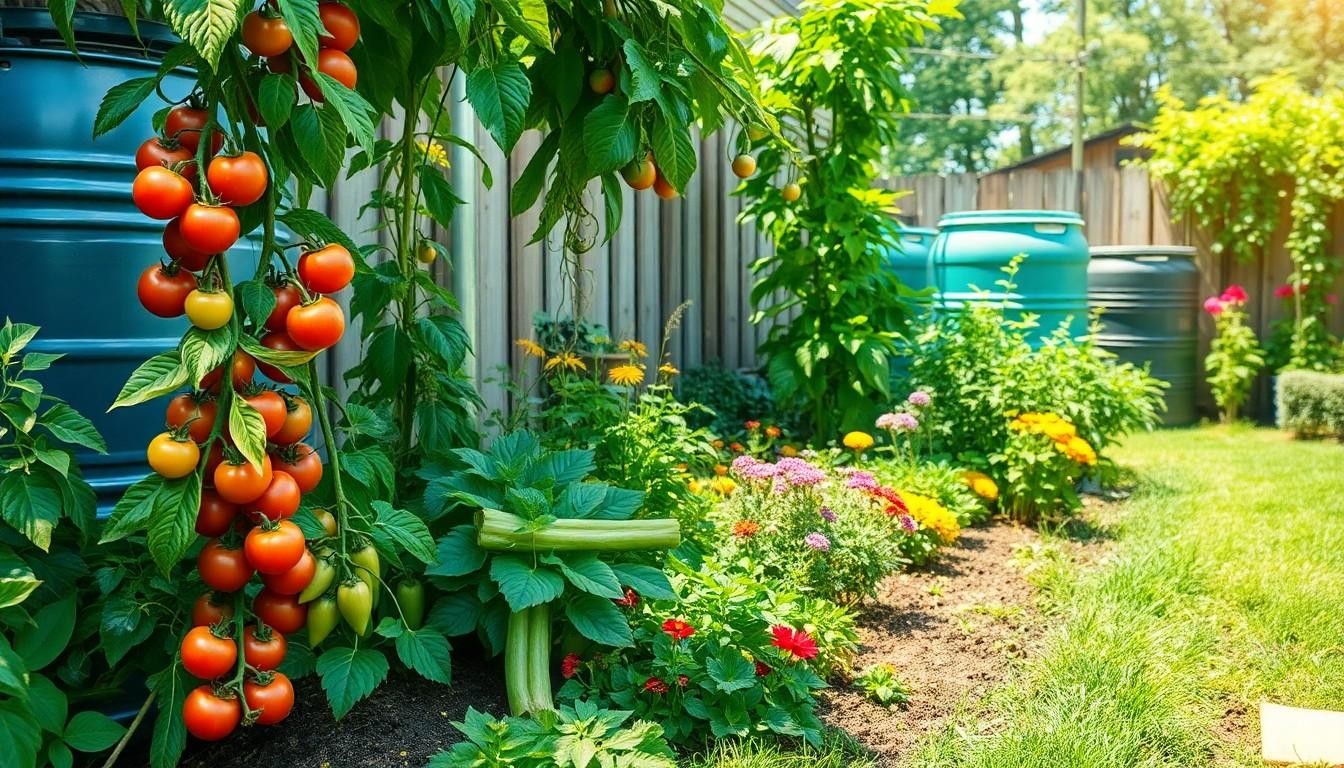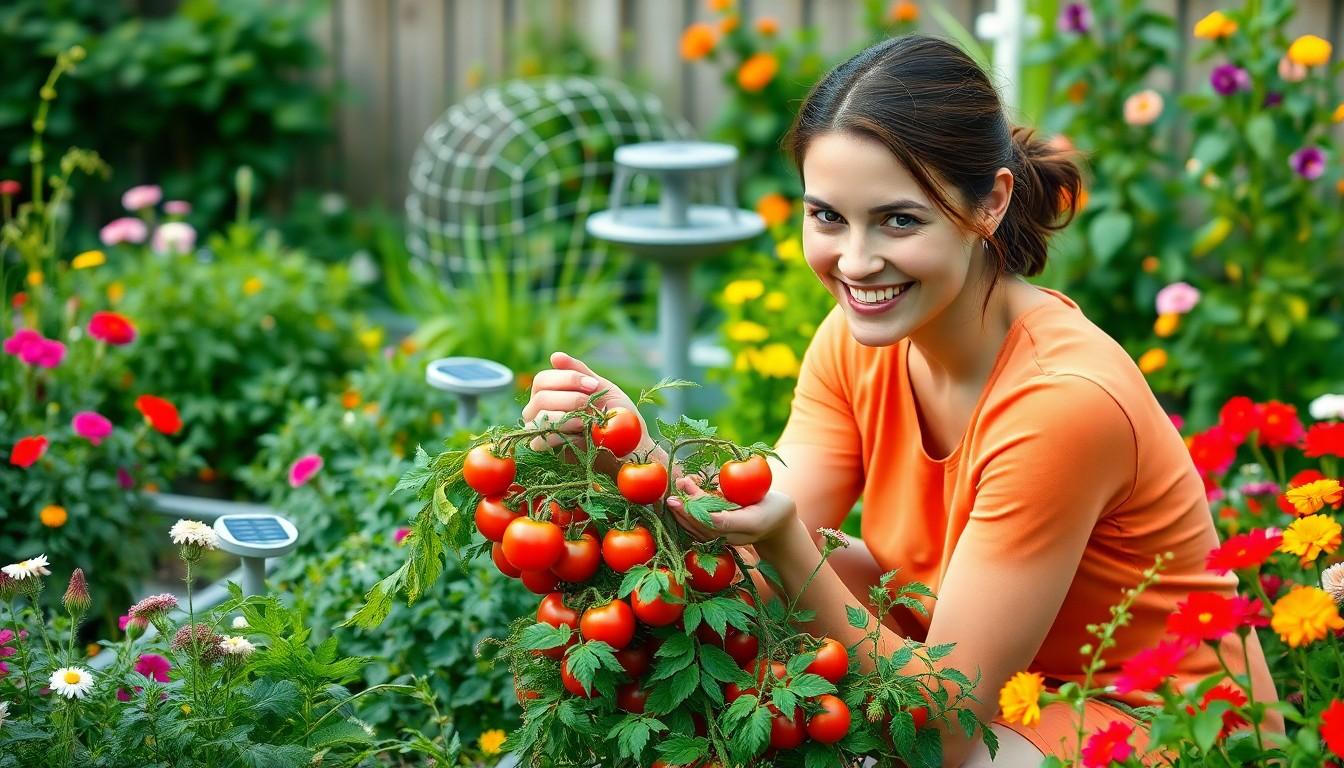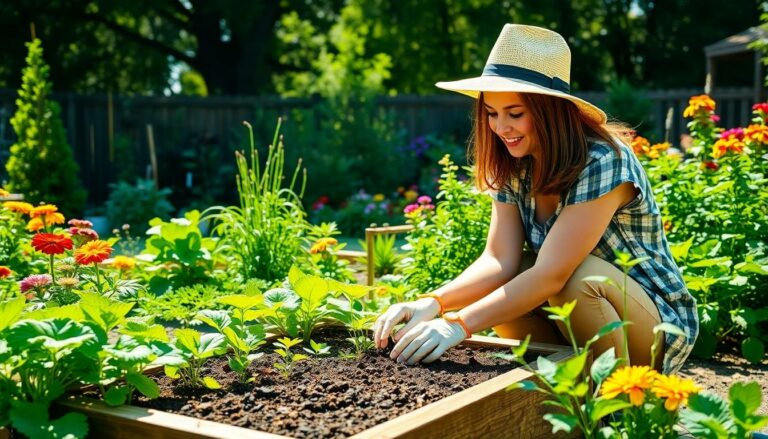Imagine stepping into your backyard and plucking fresh tomatoes while the sun warms your face. A self-sustainable garden not only turns this dream into reality but also transforms your space into a thriving ecosystem. It’s like having a mini-farm right at home, minus the muddy boots and pesky farm animals.
self sustainable garden
A self-sustainable garden provides a way for individuals to cultivate their food while reducing reliance on external resources. Such a garden ensures harmony between plants, soil, and wildlife, forming an integrated ecosystem. Composting organic waste, for instance, enhances soil fertility and minimizes waste.
Diverse plant species contribute to a healthy environment by attracting beneficial insects and pollinators. Utilizing native plants helps maintain local biodiversity and reduce water usage. Implementing rainwater harvesting systems allows gardeners to collect and use natural rainfall, aiding in irrigation.
In addition, companion planting promotes natural pest control and improves plant growth by pairing certain plants together. Examples include planting marigolds alongside vegetables to deter pests. Cover crops, like clover or vetch, enrich the soil by fixing nitrogen, which further sustains plant health.
Self-sustainable gardens often focus on permaculture principles, emphasizing long-term ecological balance. Growing fruits, vegetables, and herbs year-round can enhance food security and nutritional diversity.
Selecting perennial plants also reduces replanting efforts and fosters a thriving garden over time. Everything from chicken coops to beehives can enhance the garden’s self-sufficiency. Ultimately, a self-sustainable garden creates a productive space that nurtures both the environment and personal well-being.
Benefits of a Self Sustainable Garden

A self-sustainable garden offers numerous benefits for both the environment and the economy. These advantages contribute to healthier living for individuals as well as the community.
Environmental Impact
A self-sustainable garden supports biodiversity and enhances soil health. It fosters a natural habitat for beneficial insects and promotes a balanced ecosystem. Incorporating practices like composting reduces waste and enriches the soil without chemical fertilizers. Rainwater harvesting captures valuable resources, promoting water conservation. Cover crops protect soil from erosion while improving nutrient levels. By minimizing the need for pesticides, gardens reduce chemical runoff into local waterways. Ultimately, sustaining a garden contributes positively to the environment while providing fresh produce.
Economic Savings
A self-sustainable garden reduces grocery bills by providing fresh fruits and vegetables. Growing food at home decreases reliance on store-bought products, minimizing transportation costs. Investing in perennial plants yields long-term savings, since they do not require replanting each year. Additionally, saving seeds from crops eliminates the need to purchase new seeds annually. Reducing waste through composting cuts disposal costs while enriching the soil. Through effective resource management, gardens create economic resilience for families and communities.
Key Components of a Self Sustainable Garden
Creating a self-sustainable garden involves essential components that promote a thriving ecosystem at home. Successful gardens depend on healthy soil, efficient water management, and strategic plant selection.
Soil Health
Soil health forms the foundation of a self-sustainable garden. Healthy soil nourishes plants, supports microbial communities, and improves biodiversity. Incorporating compost enriches soil fertility by recycling organic waste. Cover crops help retain nutrients while preventing erosion during off-seasons. Testing soil pH ensures it meets specific needs, optimizing plant growth. Microbial activity enhances soil structure, allowing for better water retention and nutrient absorption. Implementing practices like crop rotation further maintains soil health, fostering resilience against pests and diseases over time.
Water Management
Water management plays a pivotal role in sustainable gardening. Implementing rainwater harvesting systems allows efficient use of natural precipitation, reducing dependence on municipal water supplies. Drip irrigation systems efficiently deliver moisture directly to plant roots, minimizing water loss through evaporation. Mulching conserves soil moisture and regulates temperature, promoting healthy plant growth. Monitoring soil moisture levels prevents over-watering, protecting both plants and the surrounding ecosystem. Creating contour gardens or swales can enhance water retention, preventing runoff and allowing soil to absorb more water.
Plant Selection
Plant selection significantly impacts the success of a self-sustainable garden. Choosing native plants enhances resilience, as they are adapted to local climates and soil conditions. Incorporating a mix of perennial vegetables, fruits, and herbs ensures a year-round harvest, while reducing the need for replanting. Companion planting attracts beneficial insects, providing natural pest control. Incorporating legumes fixes nitrogen in the soil, improving fertility naturally. Diversity in plant species fosters a balanced ecosystem, encouraging pollination and supporting overall garden health.
Design and Implementation Tips
Creating a self-sustainable garden requires thoughtful design and effective implementation. Focus on elements that foster biodiversity and resource efficiency.
Garden Layout Ideas
Effective garden layouts maximize space and resources. Raised beds enhance soil warmth and drainage, promoting healthy plant growth. Zones for herbs, vegetables, and perennials improve accessibility and organization. Incorporating paths between plant groups simplifies maintenance while preventing soil compaction. Vertical gardening techniques can increase yield in limited spaces. Utilize trellises for climbing plants, allowing better air circulation and sunlight exposure. Grouping plants with similar water and sunlight needs optimizes irrigation. Integrating natural barriers or windbreaks can protect delicate species from harsh conditions. Each design consideration contributes to a flourishing ecosystem.
Companion Planting Strategies
Companion planting employs synergistic relationships between plants. Certain pairs deter pests while promoting growth. For example, tomatoes and basil thrive together, enhancing flavor and repelling whiteflies. Marigolds naturally deter nematodes, protecting adjacent crops. Utilizing tall plants, such as sunflowers, provides shade for more delicate species. Integrating dynamic accumulators, like comfrey, enhances nutrient availability in soil. Rotating crop families each season prevents pest buildup and soil depletion. Additionally, interspersing flowers attracts pollinators, ensuring fruitful harvests. Each strategy supports a resilient, self-sustaining garden ecosystem.
rewarding journey that transforms
Creating a self-sustainable garden is a rewarding journey that transforms one’s outdoor space into a thriving ecosystem. By embracing practices like composting and rainwater harvesting, individuals can cultivate their food while fostering biodiversity. The integration of companion planting and strategic design not only enhances productivity but also supports ecological balance.
As gardeners invest time and effort into their self-sustainable gardens, they reap the benefits of fresher produce and reduced grocery bills. This approach nurtures personal well-being and contributes to a healthier planet. Ultimately, a self-sustainable garden stands as a testament to the power of nature and the importance of sustainable living.




